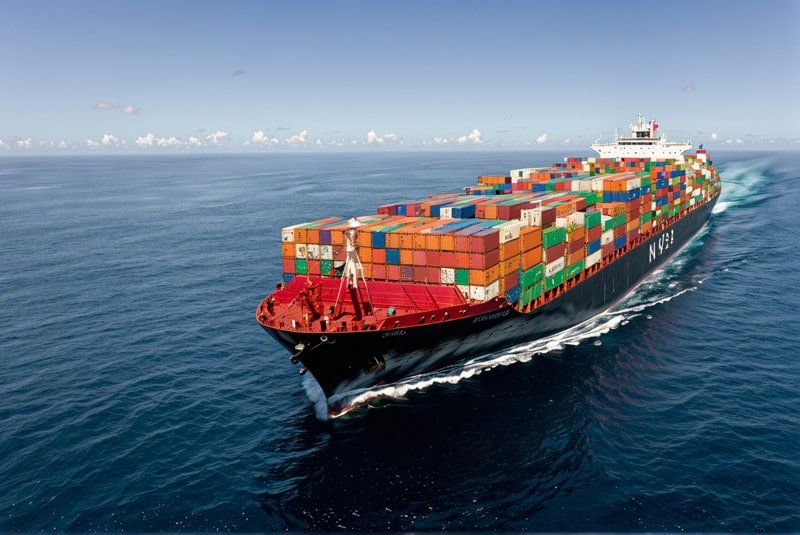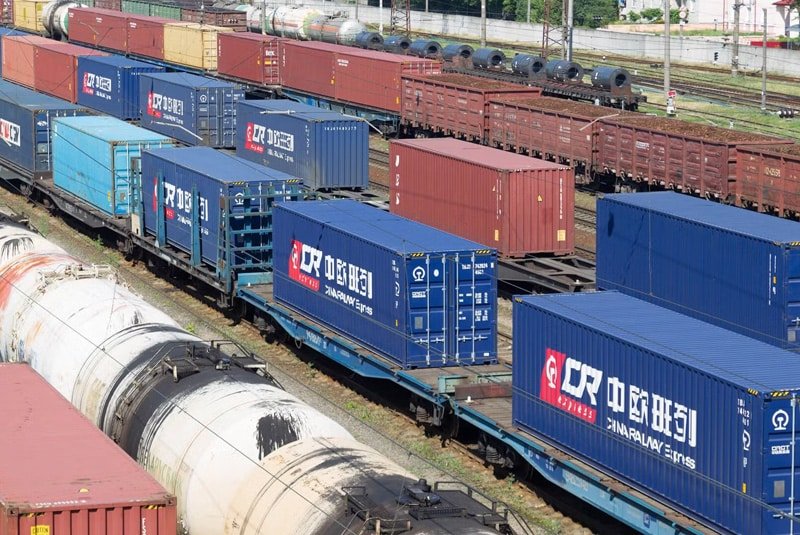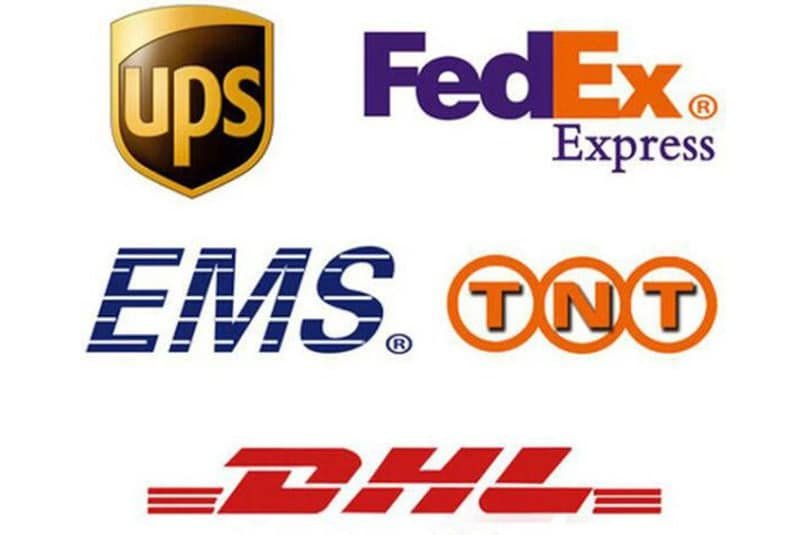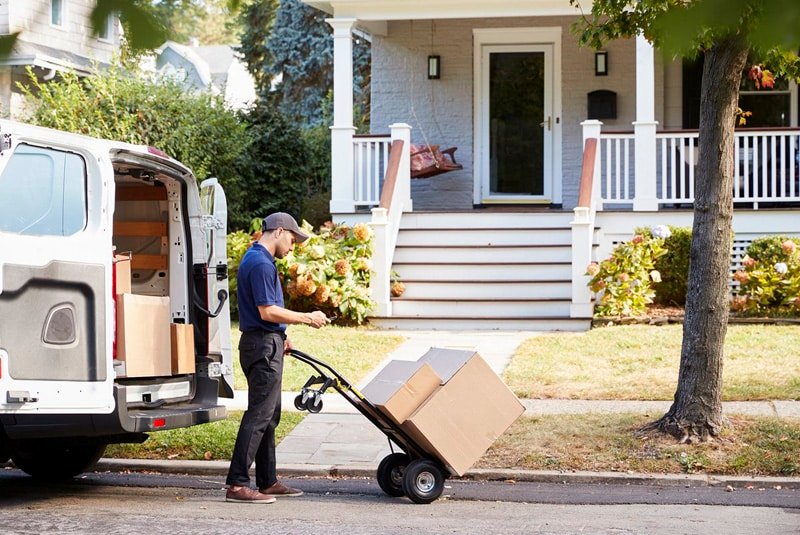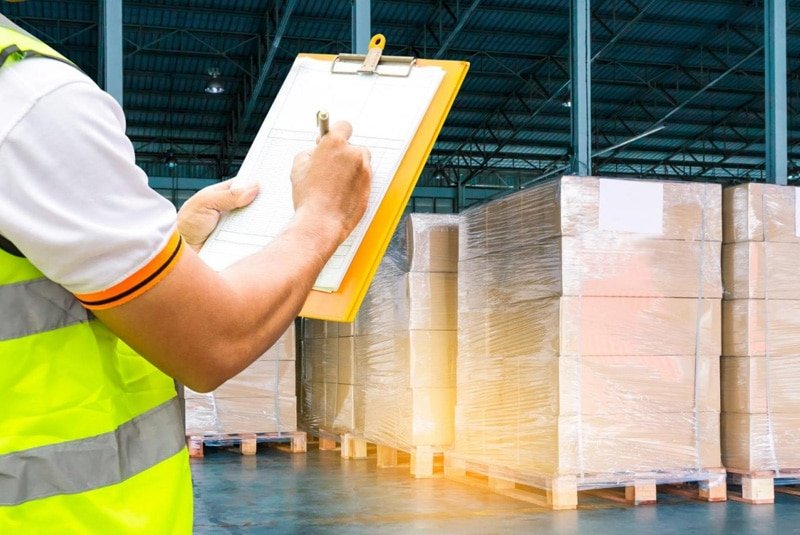Discover reliable shipping options from Mainland China to international destinations such as Japan, South Korea and Mongolia, as well as to regions like Hong Kong. Choose from air freight, ocean freight, and express delivery for fast transit times, cost-effective rates, and expert logistics support for your shipments.
Overview of Shipping Routes
Shipping to Hong Kong follows well-defined trade lanes with transit times varying by route and transport mode.
Common Shipping Lanes
Two major sea routes are commonly used for shipping to Hong Kong:
- Pearl River Delta: This route includes key ports in southern China and is highly efficient due to its industrial base and closeness to Hong Kong.
Route: Guangzhou → Shenzhen → Hong Kong - Eastern Seaboard: Serves cargo from eastern China, often involving long-haul vessels.
Route: Shanghai → Ningbo → Hong Kong
Both lanes accommodate container ships, feeder vessels, and bulk carriers.
Major Airports
Air transport plays a vital role in express shipping. Here’s a comparison of major airports:
| Mainland China Airports | Hong Kong Airport |
| Beijing Capital International (PEK) | Hong Kong International (HKG) |
| Shanghai Pudong International (PVG) | |
| Guangzhou Baiyun International (CAN) |
Transit Times
Transit time varies depending on origin, method, and routing. Sea freight is slower than air but ideal for large shipments.
Estimated Ocean Freight Time
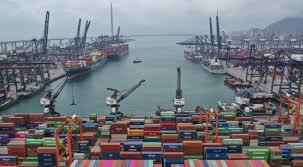
| Origin Port | Estimated Days |
| Dalian | 7 days |
| Tianjin | 7 days |
| Ningbo / Shanghai | 6 days |
| Qingdao | 7 days |
| Guangzhou / Shenzhen | 1 day |
| Xiamen | 4 days |
Estimated Air Freight Time

| Departure City | Flight Time |
| Xi’An | 4 hours |
| Shenzhen / Guangzhou | 30 minutes |
| Qingdao | 4 hours |
| Ningbo / Shanghai | 4 hours |
| Beijing | 5 hours |
| Chongqing | 5 hours |
| Kunming | 3 hours |
| Nanchang | 1 hour |
| Harbin | 4 hours |
| Changsha | 1 hour |
Shipping Methods
Shipping options include:
- Sea Freight: Cost-effective for bulk goods; longer transit.
- Air Freight: Fastest method; best for time-sensitive items.
- Courier Services: Ideal for small parcels; efficient and quick.
- Rail Freight: Suitable for inland China to Hong Kong; moderate speed and cost.
Each method offers trade-offs in speed, cost, and cargo type.
Ocean Freight
Sea freight is ideal for moving large quantities of goods at a low cost. Container prices depend on size and load type.
Container Sizes and Volume
| Container Type | Approximate Volume |
| 20-foot | 25–28 cubic meters |
| 40-foot | 55–60 cubic meters |
Shipments can be handled as:
- LCL (Less than Container Load): Shares space with other cargo.
- FCL (Full Container Load): Occupies the full container.
Overview – Ocean cargo from Mainland China to Hong Kong
Shipping by sea is popular, especially from northern China ports. It’s cost-effective for large volumes and widely used by businesses.
Shipping company offering services from Mainland China to Hong Kong port
Port of Hong Kong
The Port of Hong Kong is among the top global ports. In 2017, it ranked 5th worldwide in container traffic. It processed:
- Over 20 million TEUs
- More than 310 million tonnes of cargo
Terminals:
- Nine container terminals in Kwai Tsing (between Tsing Yi and Kwai Chung)
- One terminal in Tuen Mun
The port plays a major role in groupage and transshipment across Asia.
Should I ship by consolidation or full container from Mainland China to Hong Kong ?
FCL – Full Container
FCL suits large shipments. One container is fully dedicated to a single sender.
Container Capacities:
| Container Type | Capacity |
| 20-foot | 33 cubic meters |
| 40-foot | 66 cubic meters |
| 40-foot HQ | 76 cubic meters |
LCL vs. FCL: Which One Is Best for You?
LCL | FCL | |
| Pros | Flexible and cost-efficient for small loads | Cheaper per CBM for larger volumes |
| Pay only for the space you use | Faster delivery; fewer handling delays | |
| Easy to arrange for smaller businesses | Cargo is only handled by you and your supplier | |
| Cons | Higher cost per CBM | Less suited for small shipments |
| Extra handling time required | More labor needed for unloading | |
| More hands involved in transit | May limit delivery flexibility |
How long does it take to ship from China to Hong Kong by sea freight ?
Here are the average sea transit times to Hong Kong from major Chinese ports:
| Departure Port | Estimated Transit Time |
| Dalian | 7 days |
| Tianjin | 7 days |
| Ningbo / Shanghai | 6 days |
| Qingdao | 7 days |
| Guangzhou / Shenzhen | 1 day |
| Xiamen | 4 days |
Note: These times are average estimates and may vary depending on schedules and conditions.
Guanwutong Tip: We handle both LCL and FCL shipments. Reach out for tailored solutions.
How much does it cost to ship a container from Mainland China to Hong Kong?
For shipments outside Guangdong Province, ocean freight is preferred due to two main reasons:
- It’s cost-effective for large quantities
- Hong Kong is a duty-free port
This makes sea shipping a top choice for ongoing, high-volume trade.
Guanwutong Note: Costs vary based on several factors:
- Port of departure and arrival
- Type of cargo
- Carrier rates
- Current market conditions
We quote each shipment individually. Contact us for the most competitive rate.
Air Freight
Choose air freight when:
- Shipment is under 2 CBM and 200 kg
- Fast delivery is critical
Overview – Classic vs Express air freight
| Method | Transit Time | Best For |
| Classic Air Freight | Up to 6 days | Larger but urgent loads |
| Express Air Freight | Within 2 days | Small, high-priority items |
Both share the same flight time, but express air has faster customs processing.
How to Calculate Gross Weight for Air Freight Shipments
The gross weight of an air freight shipment is a critical measurement that impacts shipping costs, documentation, and compliance. Here’s how to calculate it accurately:
Basic Formula
Gross Weight = Net Weight + Packaging Weight
Where:
- Net Weight is the actual weight of the goods/items being shipped
- Packaging Weight includes all materials used to pack and protect the cargo (boxes, pallets, crates, cushioning materials, etc.)
Measurement Standards
- Air freight gross weight is typically measured in kilograms (kg) internationally, though pounds (lbs) may be used in some markets
- For accuracy, use a calibrated scale appropriate for your shipment size
Important Considerations
- Dimensional Weight: Airlines often compare gross weight against dimensional weight (volume-based calculation) and charge based on whichever is greater
- Documentation: Record gross weight accurately on all shipping documents including:
- Air Waybill (AWB)
- Commercial invoice
- Packing list
- Customs declarations
- Weight Limits: Be aware of carrier-specific and aircraft-specific weight limitations
- Unit Consistency: Ensure all weights use the same unit of measurement throughout your documentation
For compliant and cost-effective air freight shipping, always verify your gross weight calculations with your freight forwarder or airline before finalizing shipment arrangements.
Should I choose a Classic Air freight from Mainland China to Hong Kong ?
Classic air freight is ideal if:
- Your cargo weighs more than 20 kg
- Speed matters but budget is also a concern
- You need flexible scheduling
This method offers balance between speed and cost, especially for mid-sized shipments
Which airlines company should you ship with ?
Here are some top cargo airline options for China to Hong Kong routes:
| Airline | Details |
| Hong Kong Airlines | Hong Kong’s national carrier with regular cargo flights worldwide. |
| China Cargo Airlines | A branch of China Eastern, focused on dedicated freight services. |
Guanwutong Advantage:
We work closely with global carriers, ensuring competitive rates. We can arrange both scheduled and express services, plus trucking if needed.
Hong Kong Airlines
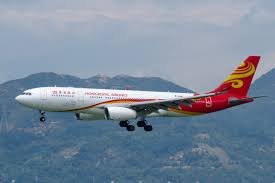
How long is the transfer from Mainland China to Hong Kong by air freight ?
Average air travel time (excluding customs and delivery):
| Departure City | Flight Duration |
| Xi’an | 4 hours |
| Shenzhen / Guangzhou | 30 minutes |
| Qingdao | 4 hours |
| Ningbo / Shanghai | 4 hours |
| Beijing | 5 hours |
| Chongqing | 5 hours |
| Kunming | 3 hours |
| Nanchang | 1 hour |
| Harbin | 4 hours |
| Changsha | 1 hour |
Note: Times reflect flight duration only. Full shipping includes pickup, clearance, and final delivery.
Guanwutong Insight:
A direct air freight route may complete within a day, but full delivery usually takes 6–9 days including handling.
How much does it cost to ship a parcel from Mainland China to Hong Kong ?
Air freight pricing depends on:
- Origin and destination
- Cargo size, weight, and type
- Urgency and service level
Guanwutong Tip: We price per request. Expect a response within 48 hours.
Should I choose an Express Air freight from Mainland China to Hong Kong ?
Express air is the best choice if:
- Your shipment is under 0.2 CBM and 10 kg
- You need fast delivery
- You’re sending small parcels
This is the quickest way to move goods between China and Hong Kong.
How long does it take for a package to be shipped from Mainland China to Hong Kong ?
With express services, customs clearance is faster due to dedicated internal departments.
Delivery typically completes in 2 days or less.
How much an Express service costs from Mainland China to Hong Kong ?
Rates depend on:
- Dimensions and weight
- Pickup and drop-off location
- Shipment urgency
Guanwutong Benefit: Thanks to strong carrier partnerships, we offer competitive pricing for express shipping.
Hong Kong Airport
- Opened: 1998
- Cargo Rank: No. 1 globally
- Annual Cargo Volume: Over 5 million tonnes
- Passenger Traffic: 73 million per year
- Airlines Operating: ~100
- Destinations: 180+ cities
Located in southwest Hong Kong, the airport is a key logistics hub connecting China and Asia. With over 70,000 employees, it’s a pillar of the region’s economy.
Trucking from Mainland China to Hong Kong
Remark Guanwutong:
Trucking is essential in international logistics. It covers local moves—pickup from the supplier to the airport or port, and final delivery after arrival. That’s why Guanwutong offers full Door-to-Door services across China and Hong Kong
Overview – Road freight from Mainland China to Hong Kong
Road freight is the only land transport option between Mainland China and Hong Kong, since rail freight has been discontinued since the early 2010s.
Thanks to China’s modern highway infrastructure, trucking is reliable and fast. It’s ideal if your supplier is near Hong Kong or in mainland China. Deliveries typically take less than a week. No matter your cargo size or type, this is a flexible and cost-effective solution.
Remark Guanwutong:
For more details, check our dedicated Trucking Services page or contact us directly. Fill out our online form and get a quote within 48 hours!
What are the main routes from Mainland China to Hong Kong ?
China’s eastern region has an extensive highway system. Western China is less developed, but most suppliers are in the east and southeast—making road links to Hong Kong efficient.
Hong Kong, located in southern China, is well-connected to all major cities by road.
What are the road transit times from Mainland China to Hong Kong ?
Transit times vary depending on traffic, roadworks, and conditions. Here’s an estimate:
| Origin City | Estimated Transit Time |
| Xi’an | 2 days |
| Shenzhen / Guangzhou | 4 days |
| Qingdao | 2 days |
| Ningbo / Shanghai | 2 days |
| Beijing | 3 days |
| Chongqing | 2 days |
| Kunming | 2 days |
| Nanchang | 1 day |
| Harbin | 4 days |
| Changsha | 1 day |
Note: In rare cases, delays can double the delivery time due to traffic or incidents.
How much does it cost to ship goods by truck ?
Prices depend on:
- Distance
- Weight and volume
- Cargo type
- Pickup and delivery zones
Guanwutong Reminder:
We provide tailored quotes based on each shipment. Contact us for an accurate rate.
LTL and FTL trucking
LTL (Less Than Truckload) and FTL (Full Truckload) work like LCL/FCL in sea freight:
| Type | Use Case | Benefit |
| LTL | Small shipments that don’t fill a truck | Share cost with others |
| FTL | Large shipments that need full space | Faster and dedicated service |
If your cargo is small, LTL is cost-effective. If it’s large, FTL may be more efficient.
Remark Guanwutong:
Rates depend on your cargo’s size, weight, and route. We quote each request individually.
Door to Door from Mainland China to Hong Kong
Remark Guanwutong:
Trucking is a vital part of global logistics. It ensures local delivery from the supplier to the port or airport, and from there to the final address. That’s why we offer reliable Door-to-Door services between China and Hong Kong.
Overview – Door to Door
Door-to-door service means complete logistics management from the supplier’s location to your destination. This includes:
- Pickup
- Customs clearance
- Trans-shipment
- Warehousing
- Unloading and final delivery
With this method, we handle everything, and you have minimal involvement. It’s the most convenient option, especially for complex shipments. While this service is more costly, the efficiency and peace of mind are worth it. Freight insurance is highly recommended due to the many stages and parties involved.
Remark Guanwutong:
For more info, visit our Door-to-Door service page. Or just contact us directly—fill in our online form and get a quote within 48 hours!
Why door to door service is necessary ?
Some logistics steps, like customs clearance, are unavoidable. Handling these steps without proper expertise can cause delays. Hiring a freight forwarder ensures quick and compliant processing.
We also manage delivery right to your warehouse, office, or home.
It’s smoother and more efficient when we take care of everything for you.
Cost Considerations
Thanks to the Closer Economic Partnership Arrangement (CEPA) between Mainland China and Hong Kong, goods can move freely in both directions. Political and economic alignment between the two also supports smoother logistics, with lower tariffs and simplified customs procedures.
Duties and Taxes
The first step in any import/export process is to identify the HS Code (Harmonized System code) of your product. This international system classifies goods for consistent customs evaluation.
Potential Additional Costs
While door-to-door service covers most steps, a few extra charges may apply based on the shipment route, location, and service level.
| Cost Item | Description |
| Customs Handling Fees | Charges for processing import/export at customs. |
| Port-to-Door Delivery | Final leg of transport from port to destination. |
| Local Handling Services | Loading, unloading, or warehousing at destination. |
| Document Processing Fees | Paperwork preparation and submission requirements. |
These charges vary depending on the cargo type, country, and service requested. Request a full quote to avoid surprises.
Customs and Regulations
Understanding customs rules in both Mainland China and Hong Kong is key to avoiding delays. Knowing the requirements ensures smooth and fast clearance.
Export from Mainland China
To export from Mainland China, register with customs and get an export license. Products must be classified with the correct HS code. Required documents include:
- Commercial Invoice
- Packing List
- Sales Contract
- Customs Declaration
Goods under export control will need extra permits from the relevant authorities.
Import to Hong Kong
Hong Kong is a free port with low restrictions and zero tariffs for most goods. When importing, you’ll need to provide:
- Import Declaration
- Cargo Manifest
- Bill of Lading / Air Waybill
Some goods, like weapons, chemicals, and drugs, need special approval. Check if your goods fall under restricted categories and apply for permits if needed.
Documentation Required
Accurate paperwork speeds up the process and avoids penalties. Clear and complete documents are a must when shipping between Mainland China and Hong Kong.
Shipping Invoices
Your invoice must clearly show:
| Detail | Explanation |
| Consignee Info | Full name, address, and contact |
| Item Description | Clear and full product descriptions |
| Quantity | Total units or packages |
| Shipment Value | Total value in correct currency |
| Country of Origin | Where the goods were made |
| HS Code | Harmonized System code for classification |
| Delivery Terms | Use Incoterms to define responsibilities |
Customs Declarations
Declarations must be correct and signed. Required documents:
- Filled Declaration Form
- Goods List with quantity and value
- Importer/Exporter details with tax IDs
- Permits or Licenses (if needed)
- Certificates like Certificate of Origin (if required)
Packaging and Handling
Proper packaging ensures your goods arrive safely and undamaged. Use durable, suitable materials based on the item type.
Packaging Standards
Pack according to international norms:
| Item Type | Packaging Advice |
| Boxes | Use corrugated, strong materials |
| Fragile Goods | Add foam or bubble wrap; protect corners |
| Liquids | Seal tightly, use leak-proof bags |
| Textiles | Use plastic/poly bags to prevent moisture |
| Box Weight | Do not exceed weight limits to avoid damage |
Label each box clearly with destination details and handling instructions. Include an extra label inside the package.
Handling Fragile Goods
Use double-boxing for added protection. Label as “Fragile” and use static-free wraps for electronics. Wrap glass items separately and pad well to avoid contact.
Secure the Package:
Secure the Package:
Seal boxes with heavy-duty tape. Prevent movement inside the box to reduce damage during transit.
Insurance and Liability
Understand your insurance choices to protect against loss or damage during shipping.
Insurance Options
Choose based on your risk level and cargo value:
| Insurance Type | Coverage |
| All-Risk Insurance | Covers most risks, excluding listed exceptions like war/natural disasters |
| Named Perils Insurance | Covers only specific events listed in the policy, like theft or non-delivery |
Declare the cargo value accurately. Low declarations may reduce compensation, while high values increase your premium.
Claim Processes
Filing a Claim
In case of loss or damage:
- Notify your insurer right away.
- Submit a complete claim form with:
- Shipment invoice
- Proof of delivery
- Photos of damage (if any)
Required Claim Documents
Prepare the following for faster claim processing:
- Commercial Invoice
- Packing List
- Bill of Lading or Air Waybill
- Insurance Certificate
- Third-party Inspection Report (if done)
- Correspondence with Carrier
Timeframe for Claims
Claims must be submitted within your insurer’s set deadline. Late filing may lead to rejection.
Tip: Always follow the insurer’s claim procedure to avoid delays or denials.
Technology in Shipping
Modern shipping between Mainland China and Hong Kong benefits from smart tech, improving speed, accuracy, and visibility.
Tracking Systems
Real-time tracking keeps your goods visible at every stage. RFID and GPS are commonly used.
| Technology | Advantages | Limitations |
| RFID Tags | Fast scanning, no line-of-sight needed | Shorter range, higher setup cost |
| GPS | Global coverage, precise tracking | Higher power usage, more expensive |
Automation in Logistics
Warehouse operations are more efficient with automation. AGVs and smart sorters speed up tasks with minimal error.
Benefits:
- 24/7 operation
- Improved accuracy
- Lower manual handling errors
Challenges and Risk Mitigation
Shipping isn’t without risks. Anticipating problems helps protect your cargo and schedule.
Weather Delays
Typhoons and storms in the Pearl River Delta can cause major hold-ups.
How to Prepare:
- Add buffer time to your shipping schedule
- Monitor weather updates closely
- Invest in weather-related insurance
Regulatory Changes
Policy updates may come unexpectedly.
Stay Prepared:
- Perform routine compliance audits
- Consult trade experts if needed
- Keep documents accurate and updated to avoid clearance delays
Sustainability in Shipping
Shipping strategies today must balance speed with environmental care.
Eco-Friendly Practices
Adopt green methods to cut emissions:
- Use fuel-efficient or LNG-powered ships
- Apply slow steaming to reduce fuel burn
- Install energy-saving tech (e.g., advanced hulls, air lubrication)
Regulatory Compliance
Meet key environmental laws and regional mandates:
| Regulation | Requirement |
| IMO Fuel Sulfur Cap | Limits sulfur content in marine fuel |
| China’s Emission Control Areas (ECAs) | Stricter emissions rules in coastal zones |
| HK Air Pollution Control (Vessels Fuel at Berth) Law |
Conclusion
Sea transport of goods from Mainland China to Hong Kong is very quick and effective with their close proximity and highly developed trade infrastructure. With either air freight, sea freight, or express shipping, companies enjoy frequent departures, quick transit times, and streamlined customs clearance. Air and express transport are ideal for emergency or high-value shipments, while sea freight is a budget-friendly alternative for large quantities.
With the right mode and a trusted logistics provider, businesses can make sure that delivery from Mainland China to Hong Kong is smooth, on time, and cost-effective.

